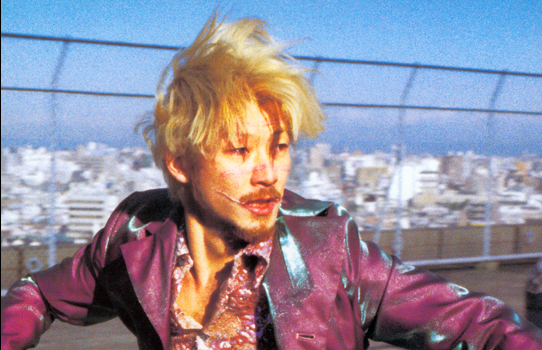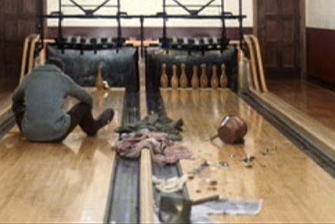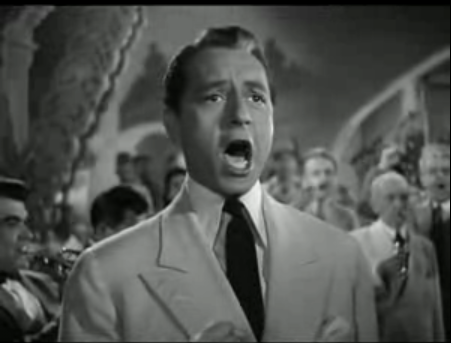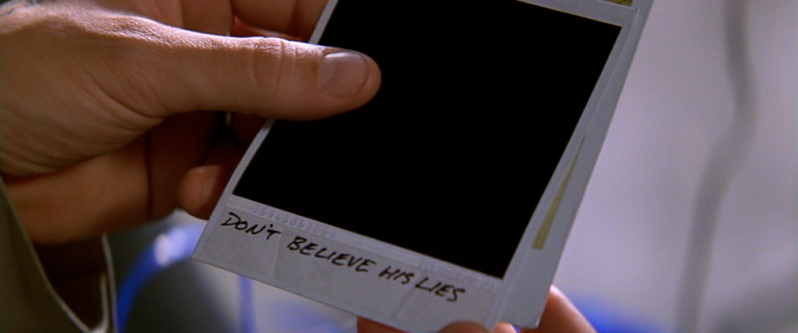The article's actual title is "Greatest Scenes Ever Shot" but I thought that might rile up some people here the wrong way and detract from what I'd like this thread to turn out to be!
Phillip French from The Observer and a lineup of others (Ryan Fleck, Ken Loach, Beeban Kidron, Nick Park, Stephen Poliakoff, Stephen Woolley, Edgar Wright and Claire Denis) discuss their personal favourites in a piece which was just published online and I assume will be appearing in the paper tomorrow too.
I wonder if GAF would be interesting in doing the same, following a similiar format (ie. one screencap from the scene and a little bit about why it's a favourite of yours) and then I'll add it to the OP or maybe start a new thread with them all listed.
I think there's enough film lovers on here so there might be some interest in this. Anywho here's the article:
Phillip French from The Observer and a lineup of others (Ryan Fleck, Ken Loach, Beeban Kidron, Nick Park, Stephen Poliakoff, Stephen Woolley, Edgar Wright and Claire Denis) discuss their personal favourites in a piece which was just published online and I assume will be appearing in the paper tomorrow too.
I wonder if GAF would be interesting in doing the same, following a similiar format (ie. one screencap from the scene and a little bit about why it's a favourite of yours) and then I'll add it to the OP or maybe start a new thread with them all listed.
I think there's enough film lovers on here so there might be some interest in this. Anywho here's the article:
Psycho (1960) - The Shower Scene
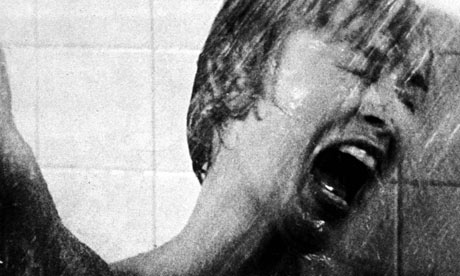
Phillip French - The Observer's Film Critic
Who will ever forget the first time they saw the 45-second shower-room murder in Hitchcock's Psycho? I remember 1959 and 1961 as the years when my first two children were born. But the first thing that comes to mind about the year in between was seeing Psycho, which I'd been looking forward to since a radio programme I'd produced the previous October, when Hitchcock had enticingly described Psycho as "my first real horror film". Entering the Plaza, Lower Regent Street, the day the film opened, I passed the cardboard cut-out of Hitchcock in the foyer, from which a tape recording of the Master's familiar Leytonstone undertaker's voice warned us what would happen if we gave away the ending.
Half an hour into the movie, when Janet Leigh stared out at us from the floor, a man sitting in front of me staggered into the aisle and vomited: testimony to the sensitive stomachs of the time, or (as several other people I know witnessed a similar incident at the Plaza that week) evidence that Paramount's publicity department had hired a method actor for the film's opening run?
Such indelibly iconic moments have been part of moviegoing since the Lumière brothers' first public screening of a dozen short scenes in December 1895. One of them had the audience recoiling from a train entering a station, another had them chuckling when a cheeky boy tricked a gardener into spraying himself with a hosepipe. People judge a movie by the strength of its story and overall impact, but ultimately what they remember are individual moments and sequences. This perhaps reflects the very nature of film, which is a rapid succession of still pictures that provide an illusion of motion. And until the coming of cassettes and DVDs, few of us were able to see a picture over and over again or re-view a sequence. So we had to replay it in our minds, and naturally we'd often get it wrong. Which is how "Play it again, Sam" entered the language instead of: "Play it, Sam, play 'As Time Goes By'."
James Stewart seems to have been thinking of this approach to cinema when he talked to Peter Bogdanovich about his craft: "What you're doing is you're giving people little little, tiny pieces of time that they never forget." This is echoed by Walker Percy in his 1961 novel The Moviegoer. Some people, his narrator says, "treasure memorable moments in their lives: the time one climbed the Parthenon at sunrise", but "what I remember is the time John Wayne killed three men with a carbine as he was falling to the dusty street in Stagecoach, and the time the kitten found Orson Welles in the doorway in The Third Man". Likewise Jean-Dominique Bauby, the paralysed French writer, describes in The Diving Bell and the Butterfly how he'd lie in the hospital recreating favourite scenes from Touch of Evil, Stagecoach, Moonfleet and Pierrot le fou. Canny film-makers have cottoned on to the idea, like James Cameron, who says: "You try to create one or more emotional, epiphanous moments within a film."
These moments come in many forms simple, complex, lyrical, violent, gentle, witty, romantic, revelatory and, if they stick, become as real as any other memory. They can range from the split-second close-up of the suave spy's missing half-finger in Hitchcock's The 39 Steps to the protracted pursuit of Cary Grant by the crop-dusting plane in North by Northwest, from the in-your-face eye-slicing in Buñuel's first silent movie, the avant-garde Un Chien Andalou, to the puzzling sequence of the Chinese businessman's mysterious box in the same director's mainstream success Belle de Jour 40 years later. Like your favourite jokes, your cherished movie moments reveal something about you and, if shared, they can be the beginning of a beautiful friendship, especially if one of them is the final sequence in Casablanca that features that line.
My own favourites? The Odessa Steps sequence from Battleship Potemkin. The love at first sight between John Wayne and Maureen O'Hara in The Quiet Man, the lust at first sight between Fred McMurray and Barbara Stanwyck in Double Indemnity. The children running through the woods to see a train in Pather Panchali and finding grandmother dead on the way back. The cruelly comic soccer match in Loach's Kes. Donald Sutherland and Julie Christie making love in a Venetian hotel in Don't Look Now. The slow-motion mayhem let loose in The Wild Bunch after William Holden says: "If they move, kill 'em!" Perhaps my single favourite moment comes in Citizen Kane, where Kane's now elderly friend Bernstein tells the reporter about an epiphanic memory of seeing a girl in a white dress on the New Jersey ferry in 1896. "I'll bet a month hasn't gone by since that I haven't thought of that girl." It's a moment about remembering a moment, and the actor Everett Sloane makes it so vivid we think we've seen that girl ourselves.
THE FRENCH CONNECTION (1971) - THE SUBWAY CHASE
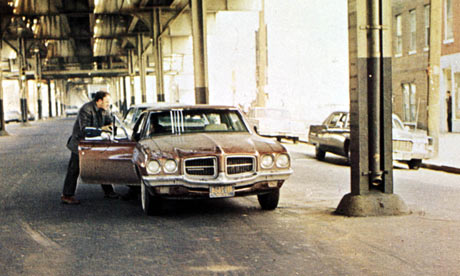
Chosen by Ryan Fleck, the American indie film director, writer, editor and cinematographer, best known for co-writing and co-directing with partner Anna Boden Half Nelson and Sugar correct(out now on DVD).
The villain's on the elevated subway. You think he's going to get away because a person on foot can't keep up with the subway But Gene Hackman jumps in a car and starts chasing the subway, riding underneath it, going at 80mph, swerving in and out of traffic. I first saw this scene on video when I was 18 or 19, in college. I loved it.
In action scenes nowadays you can chalk everything up to some kind of computer effect. Audiences no longer really believe that what they're seeing exists anymore. When The French Connection was made that notion didn't really occur to people. What you saw was usually really happening in front of the lens. It was raw. I did a little bit of research about how they shot the scene. Phenomenal. Basically they just did it. There was no security blocking off other traffic, just Hackman in a car with a camera mounted on the front. They went crazy, lost their minds, and went for it.
It was the kind of thing that you just would never get away with these days. I'm editing a movie right now that has a teenager walking on the Brooklyn Bridge, considering suicide. He steps out on to a ledge, over traffic It never even occurred to put the actual kid out on the ledge, on a bridge, over traffic because we knew there was no way authorities would let us do that. So there's camera trickery. Back in the 70s we'd have just thrown a child out over the ledge, seen what happened, and shot it.
JULES ET JIM (1962) - THE BICYCLE SCENE
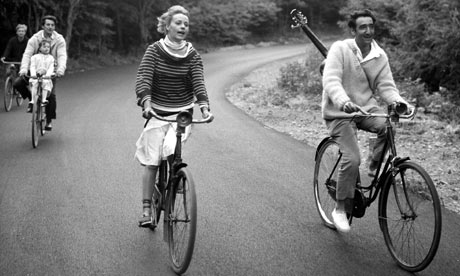
Chosen by Ken Loach, writer/director of the influential docudrama Cathy Come Home, and director of nearly 30 films including Kes, Riff-Raff, My Name is Joe and Looking for Eric. He won the 2006 Palme d'Or at Cannes for The Wind that Shakes the Barley.
This scene always cheers you up. Jeanne Moreau and the two guys on their bicycles in the sun in France, the music that goes with it Partly it evokes what you imagine to be the perfect French vacation but also it's a very fine bit of film-making.
When you're in the business and have been in the business a long time, you tend to dismember about 99% of films as you're watching. The time when you used to watch a film just for enjoyment is difficult to recapture. But just occasionally a film will transcend that. The sense of enjoyment with this trio on their bicycles is perennial. It's completely evocative of that carefree young moment, the age when people are carefree. And then of course, for these three, it will all be ruined by the war.
The song that was composed for the film "Le tourbillon" became very famous. I'd sing it for you if I wasn't surrounded by colleagues who would take the piss. I think film music that tells you what to think is cheap the film should do that without that prompting. But in Jules et Jim it is music in relation to the images, the music has an independent existence and there's a relationship between the two.
It is not something subterranean, there to steer you through every second and push you into feelings that the pictures don't generate themselves.
ALL ABOUT EVE (1950) - BILL'S BIRTHDAY PARTY
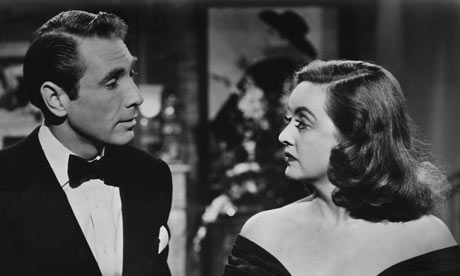
Chosen by Beeban Kidron, who came to international attention directing the BBC's adaptation of Jeanette Winterson's novel Oranges Are Not the Only Fruit in 1990. She has since directed several feature films including Bridget Jones: The Edge of Reason and To Wong Foo, Thanks for Everything, Julie Newmar.
Every single line in this scene is quotable. It's the most beautifully written thing, from an era of cinema very closely knitted to the theatre, when the words were supposed to evoke things rather than just be things for people to say while the pictures were going on. That's something that's very often lost 60 years later.
Margo, played by Bette Davis, is a great Broadway actress at the pinnacle of her power: brilliant, sophisticated, bitchy. Her assistant Eve, meanwhile, played by Anne Baxter, is simpering, beautiful and very, very ambitious. Eve is trying to replace Margo, trying to get her next part on Broadway and take her lover, Bill. This is the scene where Margo finally loses her rag, having waited upstairs for Bill to throw him a party before discovering that he's been downstairs with Eve for 20 minutes.
The scene sums up the central themes of the film, to do with Margo's insecurity about age and about the way that Eve is eating into her life. This is referred to in the dialogue all the time: Margo finds Eve and Bill talking and immediately asks if she can join in "Or isn't it a story for grown-ups?" Bette Davis, despite being so powerful, gives a phenomenal performance of insecurity. That is very, very rarely drawn in the cinema.
The question of ageing and of being replaced by the younger, more beautiful woman is something we can still understand today.
JASON & THE ARGONAUTS (1963) - THE SKELETONS SCENE
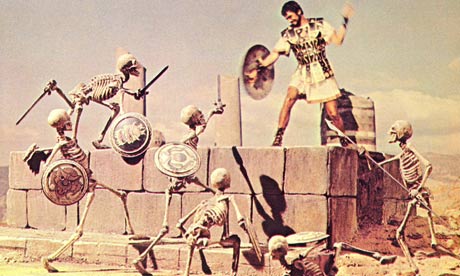
Chosen by Nick Park, Oscar-winning animator and writer/director of the Wallace and Gromit films.
As a boy I was into monsters, heroes going off on adventures and stop-motion animation. I saw trailers for this film and it seemed to be everything I wanted. I remember being at a school fair, just before Christmas, and being desperate to get home to watch it.
The scene that stood out the most, that I found both horrifying and enthralling, was the skeleton fight at the end. The heroes are all live action and the monsters are all done with stop-frame animation. It was a terrific technical feat I think there were eight animated skeletons or more, cut together quite seamlessly with the live action. The whole choreography of it was amazing. But the story, too, really caught my imagination. These skeletons were planted like seeds, by a wizard chap spreading dragons teeth, and then dead soldiers grow up to fight the Argonauts. So exciting.
At around the same time I saw Ray Harryhausen, the animator, explain on television how he had done the skeletons. I immediately went and built my own models with wire and foam I think I was planning to film something with my friends, live action, cut together with a sea monster made out of a coat hanger and nylon tights.
Disney films didn't make me want to go home and do it myself because it was shrouded in mystery and technique. But when I saw the skeletons in Harryhausen's film I wanted immediately to do it myself, because you got a sense of how it might be done.
2001: A SPACE ODYSSEY (1968) - THE FINAL SCENE
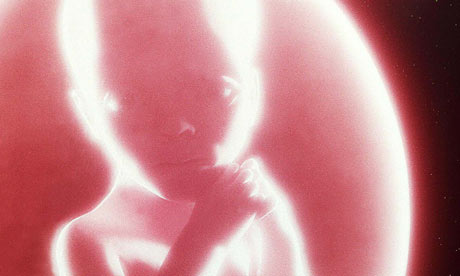
Chosen by Stephen Poliakoff. After starting out as a playwright, Poliakoff turned to writing and directing television dramas including Shooting the Past, Perfect Strangers and the award-winning The Lost Prince. His feature films include Hidden City and most recently Glorious 39.
Still, after 40 years, people are arguing about the ending of 2001: A Space Odyssey. What the ending means to the film. The computer taking over, the menacing computer howl, the foetus it has passed into cinema folklore. Science fiction was not a genre that attracted me much, and it was very unsexy in the 1960s. But Kubrick's film was the most original I had ever seen. It came at me for the first time, completely alone, in a cinema on a summer afternoon in 1968. I was 15, and it made an extraordinary impression on me. There was a lot more mainstream "auteur cinema" than there is now, Hollywood studios producing personal films. Nevertheless Kubrick stood alone, a titanic figure that obsessively made films, under great secrecy, and with nobody interfering.
I had never seen such a bold use of cinema, and certainly never such an incredibly obscure ending. To have spent all that time and money and to have the daring some would say foolhardy daring, but nevertheless a magnificent daring to end the film on such an elusive and obscure note, I found it amazing as a 15-year-old that anybody should have the balls to do that. It excited me and changed my whole view of what you could do as a writer, whatever medium you were attempting Kubrick's aspiration to be original. Now it's been much imitated but 2001 was extraordinarily ahead of its time, and has continued to survive and influence generations.
TAXI DRIVER (1976) - THE MIRROR SCENE
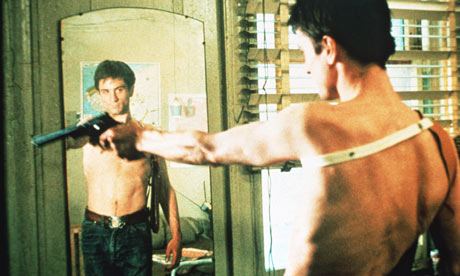
Chosen by Stephen Woolley, the award-winning producer best known for his collaborations with director Neil Jordan including Interview with the Vampire and The Crying Game. Recent projects include How To Lose Friends and Alienate People and the forthcoming Made in Dagenham. In 2005 he made his directorial debut with Stoned.
I remember seeing Taxi Driver for the first time in Paris in the 70s. The taxi gliding across New York's wet streets, smoke coming out of the subways, it was all incredibly delicious. It had this thundery Bernard Herrmann score, and when Robert De Niro did his "are you talking to me?" sequence in front of the mirror you suddenly sensed the degree of anger there. It was all bottled up until he explodes with this bravura performance. It's very clever, very economical, everything concentrated on his eyes.
Sequences like this are not only successful because they are so beautifully created but also because they often come at a point in a film where you begin to realise where it's going, you think, "oh my god, I know what this is about". Here you become aware that not only is Travis Bickle schizophrenic but he's aware of his own schizophrenia. He's like a genie in a bottle and you're waiting for him to let the genie out which he does brilliantly in that horrific sequence later on where he shoots Harvey Keitel's character and saves Jodie Foster's.
The scene was improvised but De Niro had tried out a version of it in an earlier film he made with Brian De Palma, I think it's called Hi Mom! I didn't see it until years after watching Taxi Driver and I remember thinking "I can't believe it the thing he does in Taxi Driver!"
CARRIE (1976) - THE BLOOD AT THE PROM SCENE
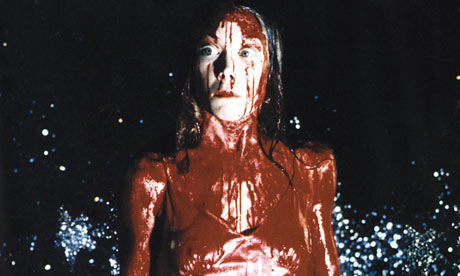
Chosen by Edgar Wright, who co-created Channel 4's Spaced, and has collaborated with comedian Simon Pegg on hit films Shaun of the Dead and Hot Fuzz. His latest directing project, Scott Pilgrim vs the World, is out later this year.
I always describe Carrie as the Grease of horror movies: it resonates with all ages because everybody remembers their awkward teenage phase and can watch it and say I was the bully or the victim or the person who did nothing. It explores how apocalyptic your rage can be as a teenager. Carrie's not a killer, she's a girl who has been bullied and through a terrible confluence of events ends up burning the school down.
It's also unusual for a horror film. It doesn't have someone being killed every 20 minutes and then a climax it builds to one huge climax at the prom. School bullies have fixed the prom so that Carrie White will win and they can humiliate her by tipping a bucket of pig's blood over her in front of the whole school. The scene and the excruciating build-up to it is one of the greatest set pieces of all time, full of suspense, with a monumental payoff.
A crane shot sets up the sequence so you know where everyone is positioned and that the bucket of blood is above Carrie and Tommy's heads. Once the plot is set in motion Pino Donaggio's score takes over. The resulting sequence is pure opera.
I first saw Carrie on VHS with my brother's friend when I was about 12. I obsessively read about horror movies and was dying to see it. I've watched it so many times since. De Palma planned the sequence for months and battled the studio over the time spent on filming it. But it was worth the blood, sweat and tears. It still leaves audiences speechless.
REAR WINDOW (1954) - THE OPENING SCENE
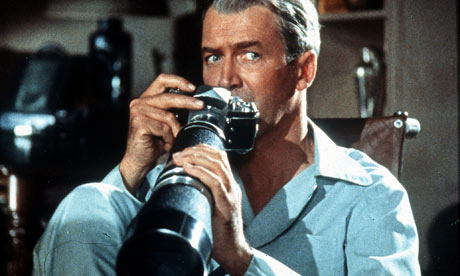
Chosen by Claire Denis, who made her directorial debut in 1988 with Chocolat. Subsequent films include Good Work and 35 Shots of Rum. Her latest, White Material, is out in the summer.
We don't have courtyards in France like they do in New York, where Hitchcock's film is set, but we have street buildings that are set very close to each other. From where I stand in my kitchen or my bedroom I can watch neighbours' windows very easily. I'm intrigued by voyeurism, about what is behind windows, and often in my films I stage a scene as if I was peeping in from outside.
The situation Hitchcock establishes in the opening scene of Rear Window is the ultimate voyeuristic situation. The character played by James Stewart has broken his leg, has nothing to do but linger behind his window and watch. He is passive but eager to find something to be a witness of something, or to give his imagination something to chew on. As a spectator in a cinema theatre, you are a sort of prisoner in a chair, like he is.



















